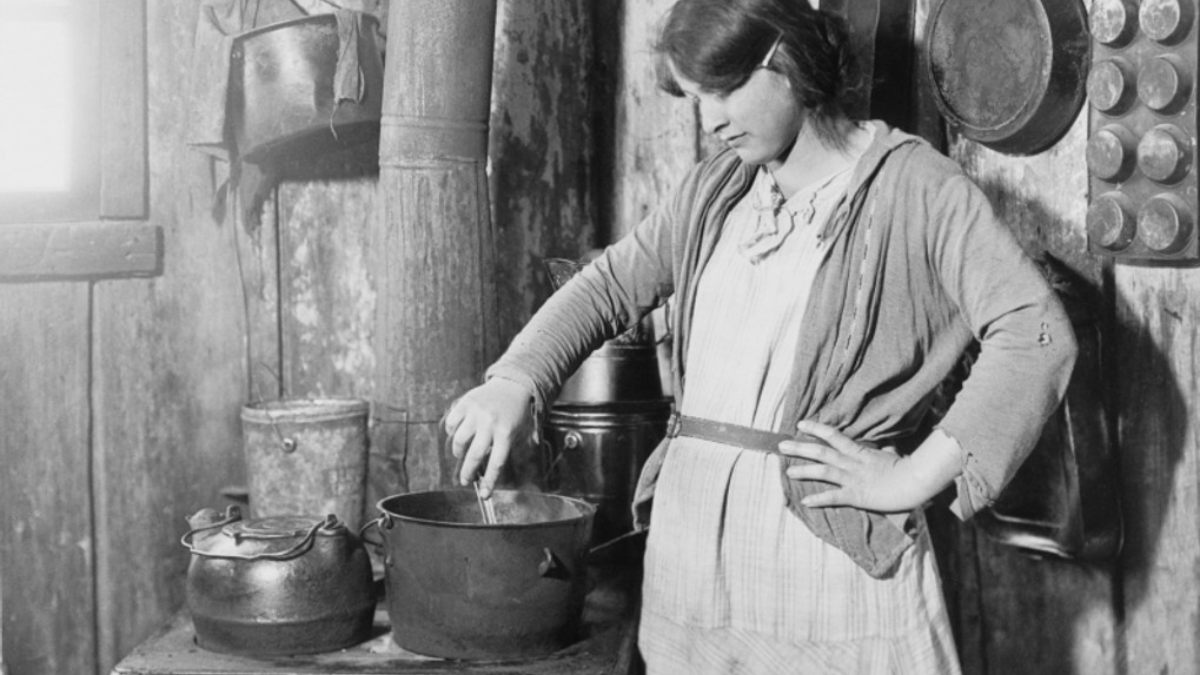Click here to read the Spanish version.
It seemed that the so-called ‘summer of San Miguel’ was dragging on too long and that this year autumn was going to be a kind of spring. But temperatures have dropped, the rainy season arrives and, with it, we dust off the bowls, the ladles and we get down to work to prepare a good hot dish. It is usually easy to opt for a typical cocido madrileño, fabada asturiana, cocido montañés, a garlic soup, or any traditional Spanish stew. But today we would like to travel through our fiery palate to discover 11 typical spoon dishes from around the world to make your way of warming up more exotic. Take note!
Locro argentino (Argentina)
Although Argentina is now entering the hot season, it never hurts to cook a delicious locro criollo. This is one of the most iconic spoon dishes of Argentine cuisine. It is a hearty stew that is usually eaten especially on National Day (May 25) or Independence Day (July 9). Its main ingredients are white corn, beans and pumpkin, but also chorizo sausage and other parts of the pig such as breast or skirt. Its origin dates back to colonial times and it is a dish that fuses both cultures.
Bouillabaisse (France)
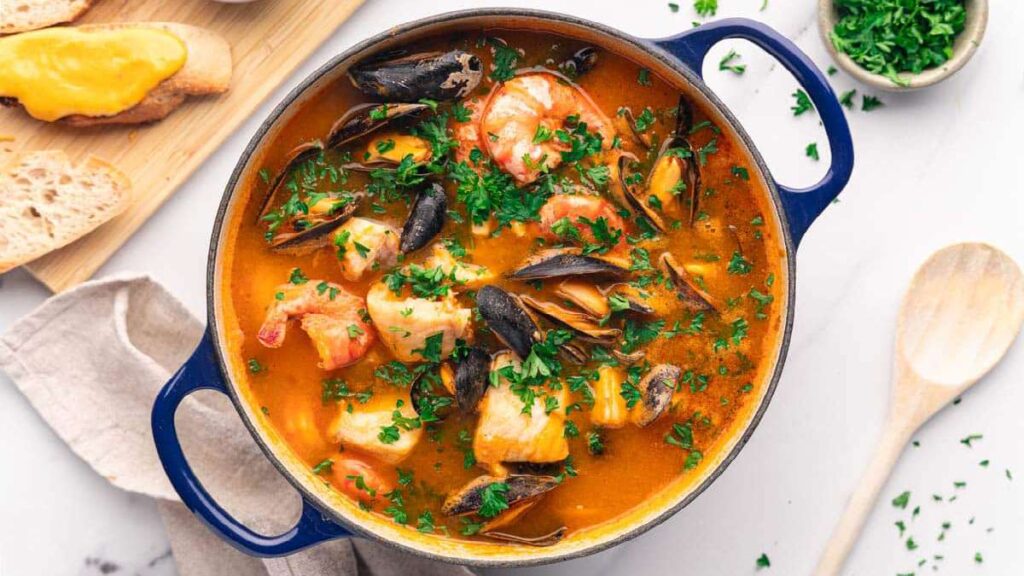
This stew, also known in Spain as bouillabaisse, is a traditional spoon dish from Provence, specifically from Marseille. It is a fish soup, which may include scorpion fish, red mullet, monkfish, conger eel or snapper, among other species. In addition, other ingredients that make up the recipe are potatoes, garlic or croûtons.
Minestrone (Italy)
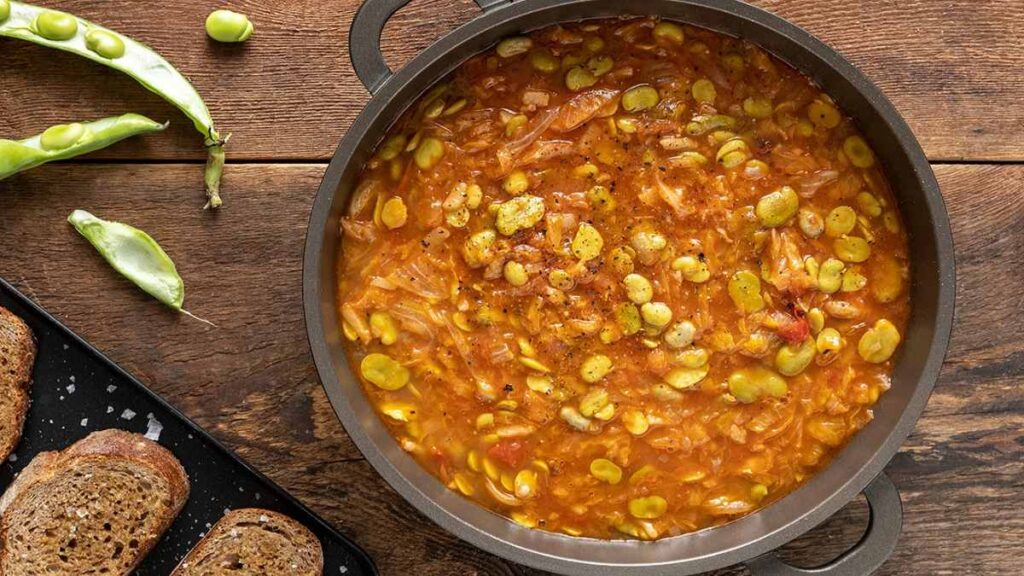
One of the classic spoon dishes par excellence in Italian cuisine. This vegetable soup is prepared with seasonal ingredients and usually also includes legumes, and even pasta or rice. There are different varieties all over the country, depending on the region, where the way it is prepared or the ingredients used change.
Kartoffelsuppe (Germany y Austria)
We traveled to Germany and Austria to taste one of their typical winter soups. Kartoffelsuppe is a traditional spoon dish whose main element is potato, as well as vegetables, and is halfway between soup and cream, since many ingredients are mashed. In many households, sausages are also added to the recipe.
Chupe de camarones (Perú)
In many South American countries, soups are usually called ‘chupe’. Peru’s gastronomic richness is well known and, for this reason, chupe is a must in its traditional recipe book. One of its most emblematic varieties is chupe de camarones (shrimp chowder), originally from the western coast of the country, especially from Callao and Lima. Its star ingredient is fresh shrimp, but this thick soup also includes rice, yellow potato, beans, chili, corn, egg or fresh cheese, among others.
Caldo verde (Portugal)
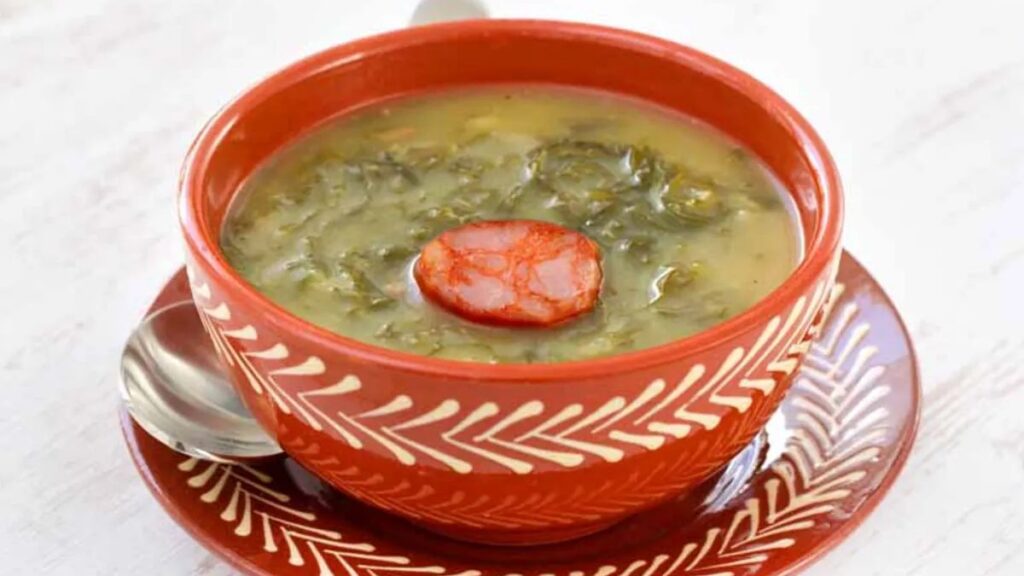
It is one of the emblems of Portuguese cuisine, especially in the north. This cabbage-based soup also contains potatoes or sausage; it is served with corn bread and is usually served in earthenware bowls. In 2011 it was included as one of the 7 Wonders of Portuguese Gastronomy.
Pozole (México)
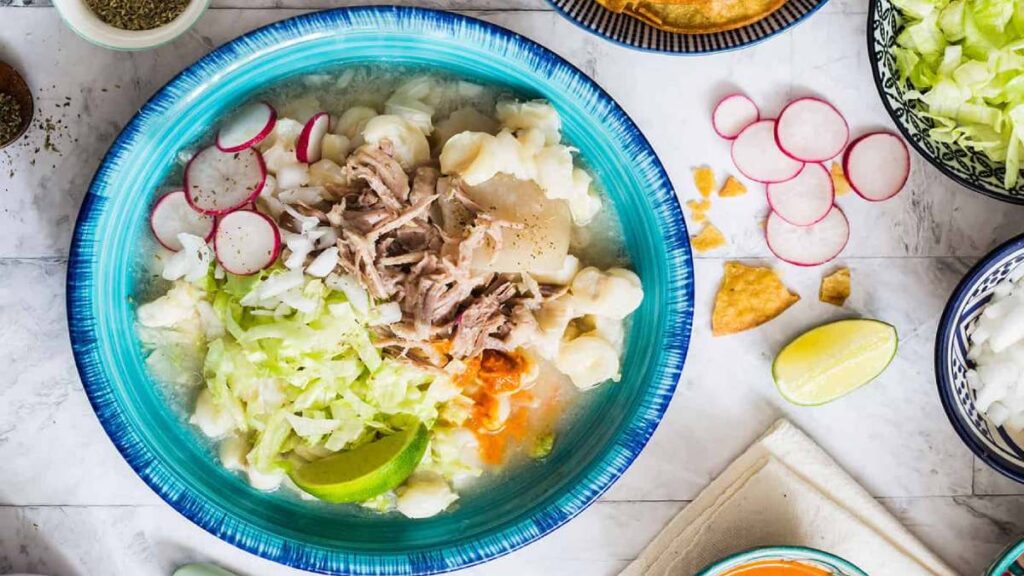
It is the spoon dish par excellence in Mexico. Very typical during the Fiestas Patrias celebrations -in mid-September-, the origin of this soup dates back to Pre-Hispanic times and its recipe has a mix of Mexican, European and even Asian ingredients. Although there are almost twenty varieties, the most popular is pozole blanco, prepared with cacahuazintle corn broth and pork, lettuce, onion and radishes, chopped, chile piquin, oregano, lemon juice and many people also add avocado. As they would say in Mexico, drinking pozole revives even the dead.
Goulash (Hungary)
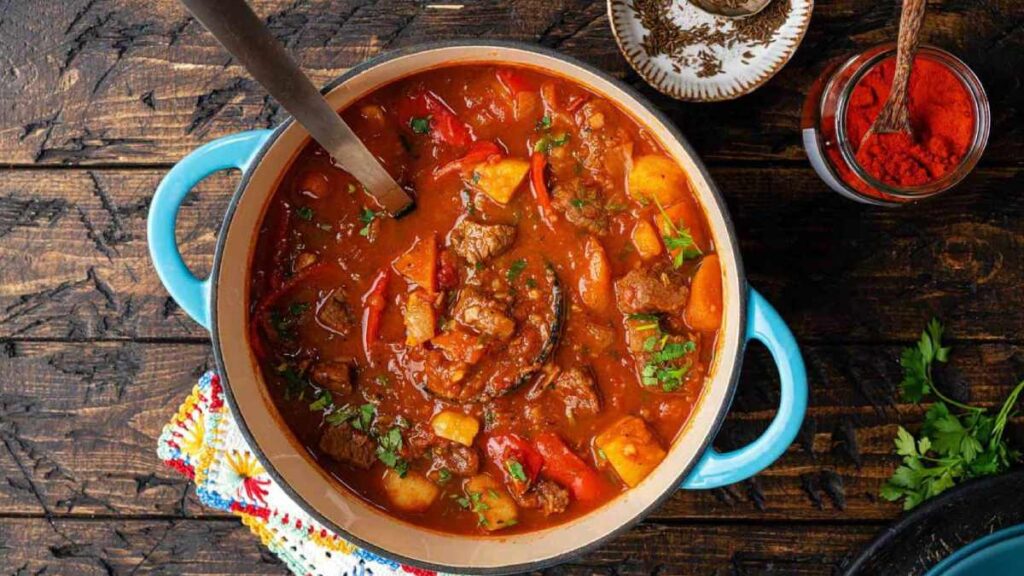
It is a very popular dish of Hungarian cuisine. This stew cooked with meat, onions, peppers and paprika is considered one of the oldest stews. There is also a soup version. It is very popular in other Eastern European countries such as Slovakia, Czech Republic or in the Balkans.
Sopa de miso (Japan)
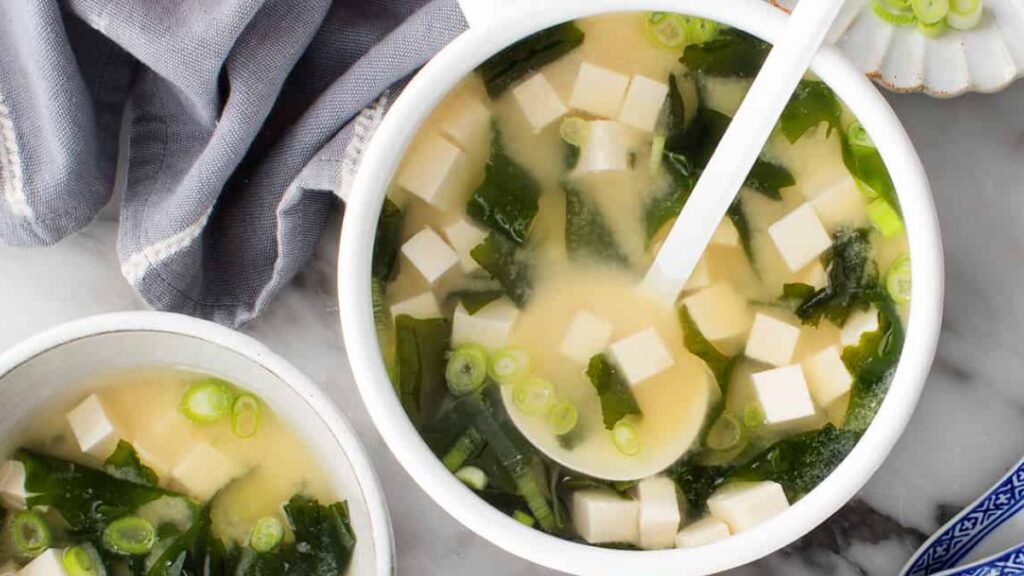
It is one of the basics of Japanese cuisine and one of the easiest recipes to prepare. A comforting dish that helps you warm up quickly. It is prepared with a dashi broth and miso paste. In addition, tofu, seaweed, spring onions or leeks are usually added.
Harira (Morocco)
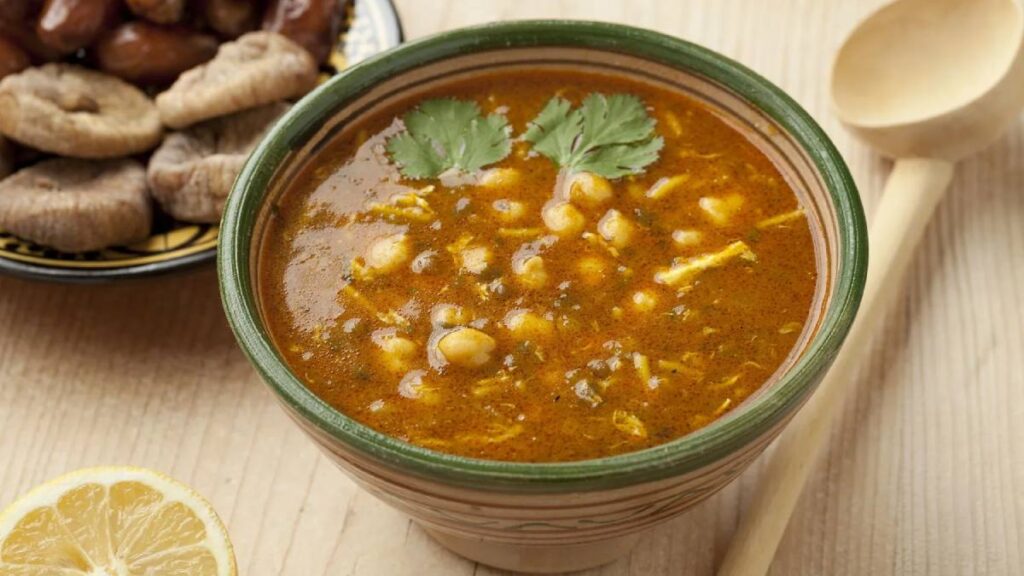
This traditional Moroccan soup is prepared with tomatoes, lentils, chickpeas and meat. Seasoned with ginger, pepper, cinnamon and many fresh herbs, it is an especially popular dish during Ramadan, as it is ideal for breaking the fast, due to its amount of nutrients. There are so many varieties of this recipe that in the end the name harira has been taken as a generic name for any soup containing legumes or cereals.
Gumbo (United States)
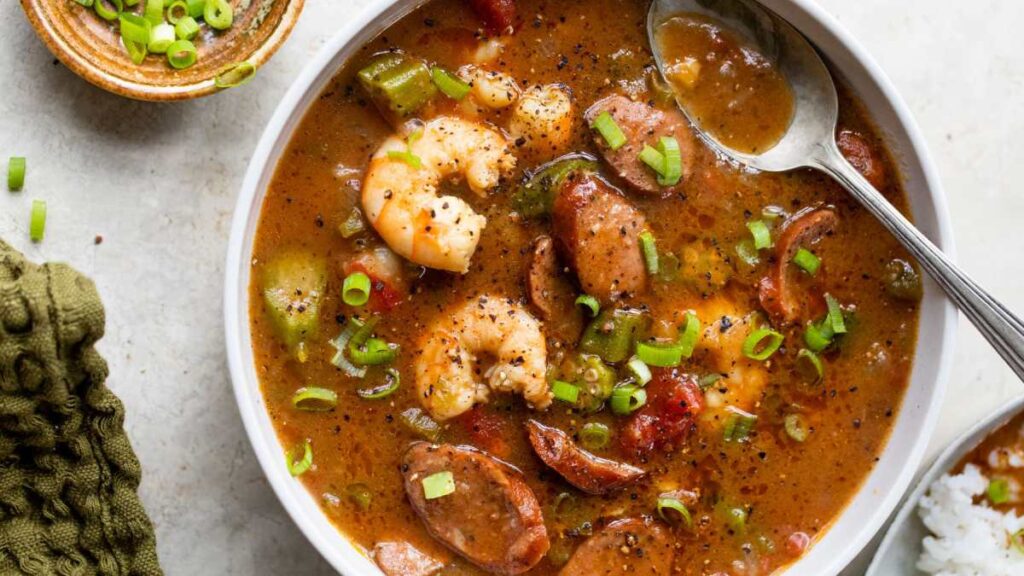
It is one of the most popular stews in the United States. Traditional of the Lousiana cuisine, being one of the most representative dishes of this region, gumbo is prepared with a well-seasoned broth, to which meat and/or seafood is added, a thickener and what is popularly called the Creole “holy trinity”: peppers, onions and celery. This recipe has influences from areas of the world as diverse as Africa, France, Spain and even the Choctaw Native Americans.

